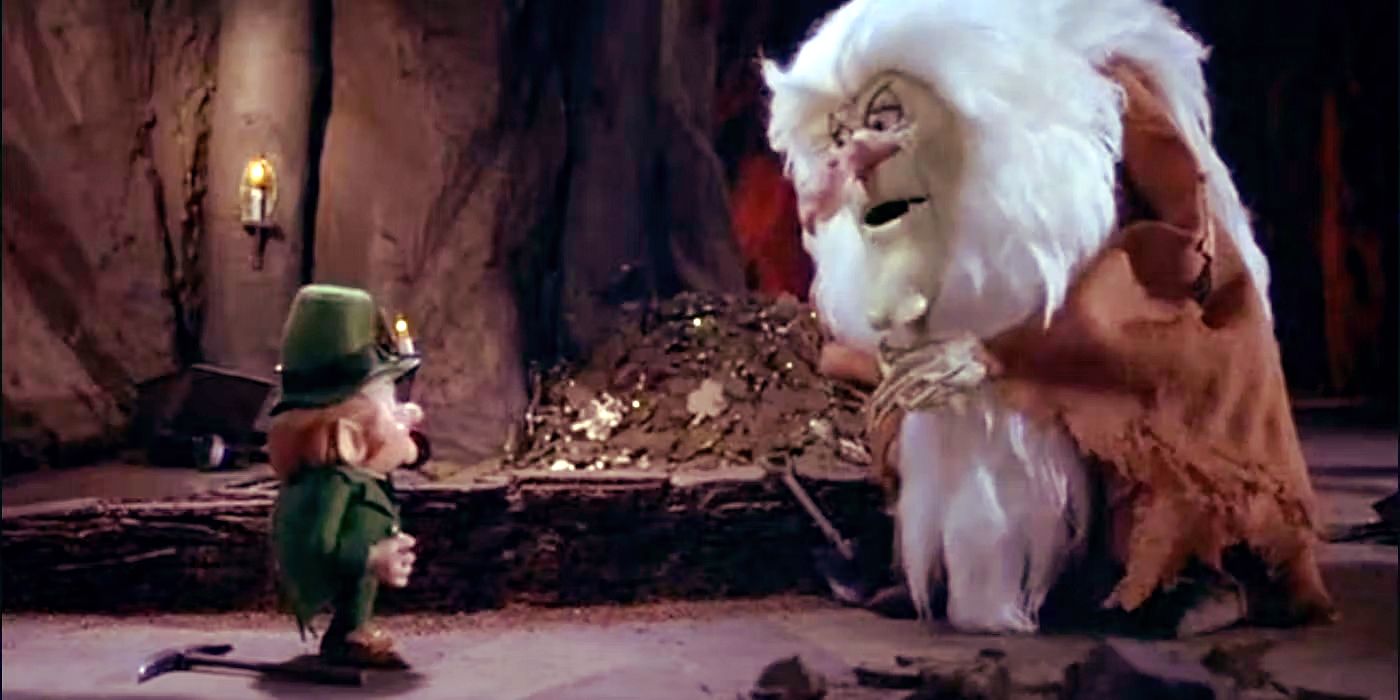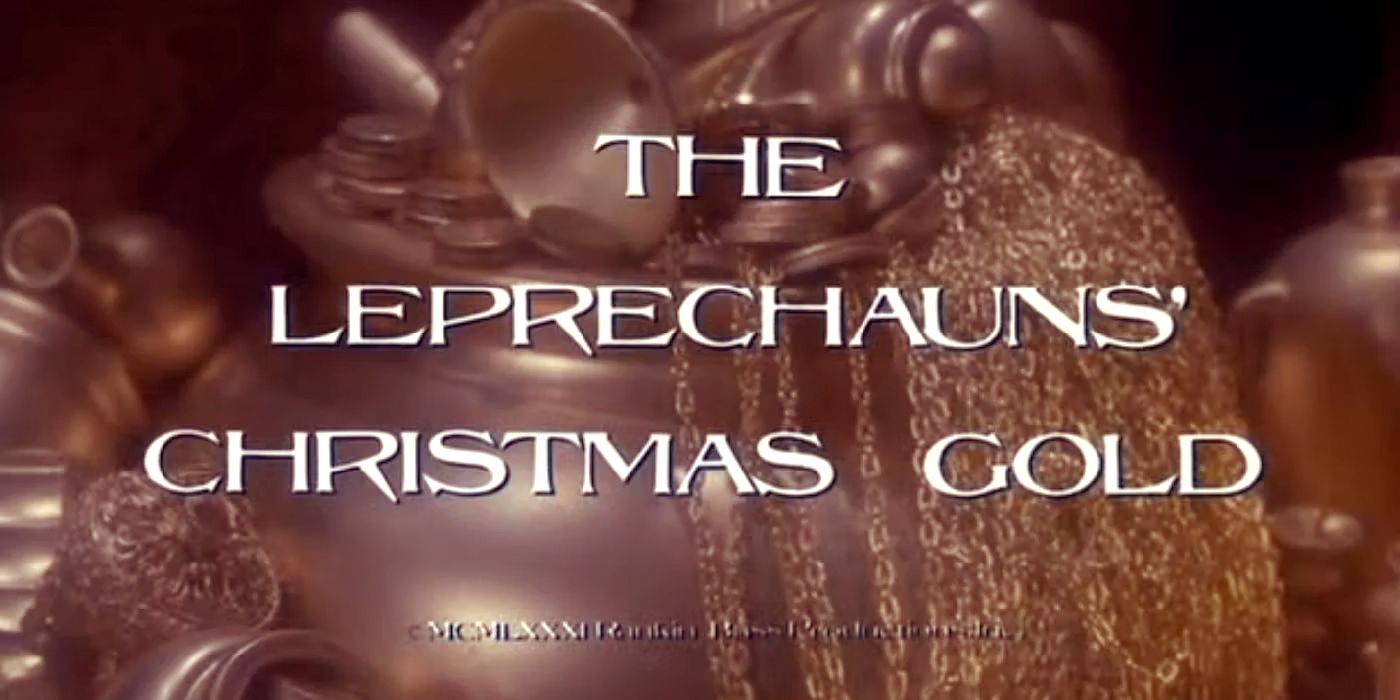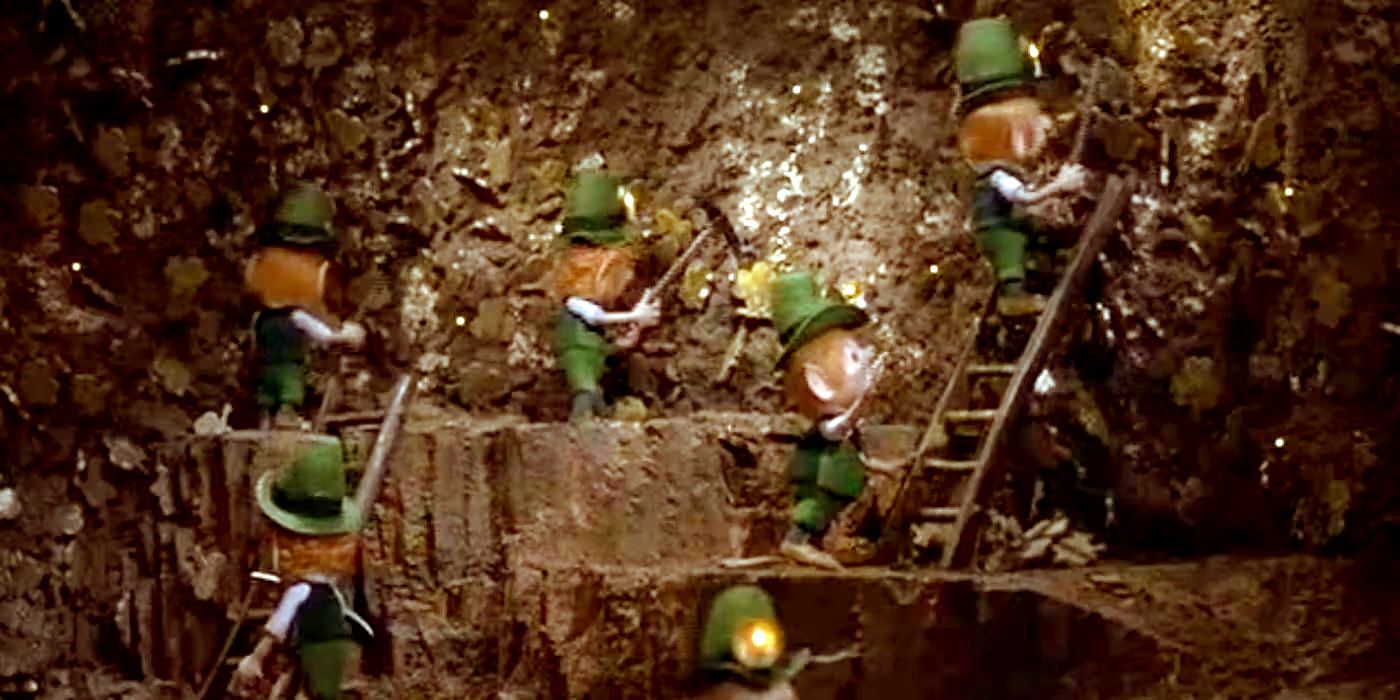The animation team of Arthur Rankin Jr. and Jules Bass have become synonymous with the holiday season, thanks in part to their evergreen Christmas specials like Rudolph the Red-Nosed Reindeer and Santa Claus Is Comin' to Town. Their success spawned a slew of similarly themed specials, some of which were better than others. By the time the formula began to sputter in the early 1980s, they had mined most of the traditional holiday concepts dry.
That spawned what remains perhaps their wildest effort by far: The Leprechauns' Christmas Gold, their second-to-last holiday effort, served as a de facto mash-up of Christmas and St. Patrick's Day. It's as bizarre as it sounds, and given Rankin/Bass's reputation for creative visuals, it makes for singularly weird holiday viewing.
The Leprechaun's Christmas Gold Isn't Really About Christmas
The Leprechauns' Christmas Gold concerns an Irish cabin boy who rows to a mysterious island in order to get his captain a Christmas tree. He uproots a pine, only to release a banshee imprisoned beneath. She seeks "the Christmas gold" that belongs to the local leprechauns, without which she'll turn to tears by Christmas morning. The sailor teams up with the leprechaun patriarch, Blarney Kilakalarny, to halt the banshee's depredations and save Christmas.
These may be new facts for holiday aficionados, which is kind of the point. Beyond the term "Christmas gold" and the banshee's deadline of Dec. 25, little about the story reflects Christmas in any way. Instead, Irish stereotyping is the order of the day, with the resolutely green landscapes hiding the gold beneath a hill full of shamrocks, and Kilakalarny blowing away the rainbow that reveals its location. It ends with "a Christmas miracle" as the banshee's ultimately successful schemes come too late and she turns to tears -- wailing the whole time -- before the ocean washes her away.
The special's songs cover the leprechaun's gold mining and shoemaking endeavors. The one nod to the ostensible purpose of the exercise -- a song called "Christmas in Killarney" -- features an emerald-green townscape with a Yuletide tree full of gold pots and a green-clothed Santa consisting of two leprechaun's standing on each other. The song itself wasn't written for the production, though its other three musical numbers were. (It first appeared in 1950, and is included on Bing Crosby's collection of Christmas music released in 1951.)
The End of the Rankin-Bass Formula Made the Special Weird
The reasons for this strange special existing likely come down to creative exhaustion. Rankin-Bass had released a new Christmas special nearly every year for well over a decade, including the likes of The Little Drummer Boy: Book II and even Pinocchio's Christmas. Having thoroughly scoured the traditional sources of inspiration, they were coming up dry. In fact, The Leprechauns' Christmas Gold could have readily dropped the pretense of Christmas and become a St. Patrick's Day special. The animators clearly found far more inspiration in the various chestnuts of Irish folklore than the Christmas stories they'd previously scraped down to the bedrock. The holidays make for better ratings than St. Patrick's Day, which might be the only reason for the façade.
In any case, it marked a pause in their run of specials, and their final holiday special -- The Life and Adventures of Santa Claus -- came four years later. That leaves The Leprechauns' Christmas Gold stranded in a bizarre no man's land: equal parts utterly desperate and strangely inspired. It's hardly traditional holiday fare, but for those looking for something different in Rankin-Bass's bag of goodies, they won't find anything quite like The Leprechauns' Christmas Gold.



